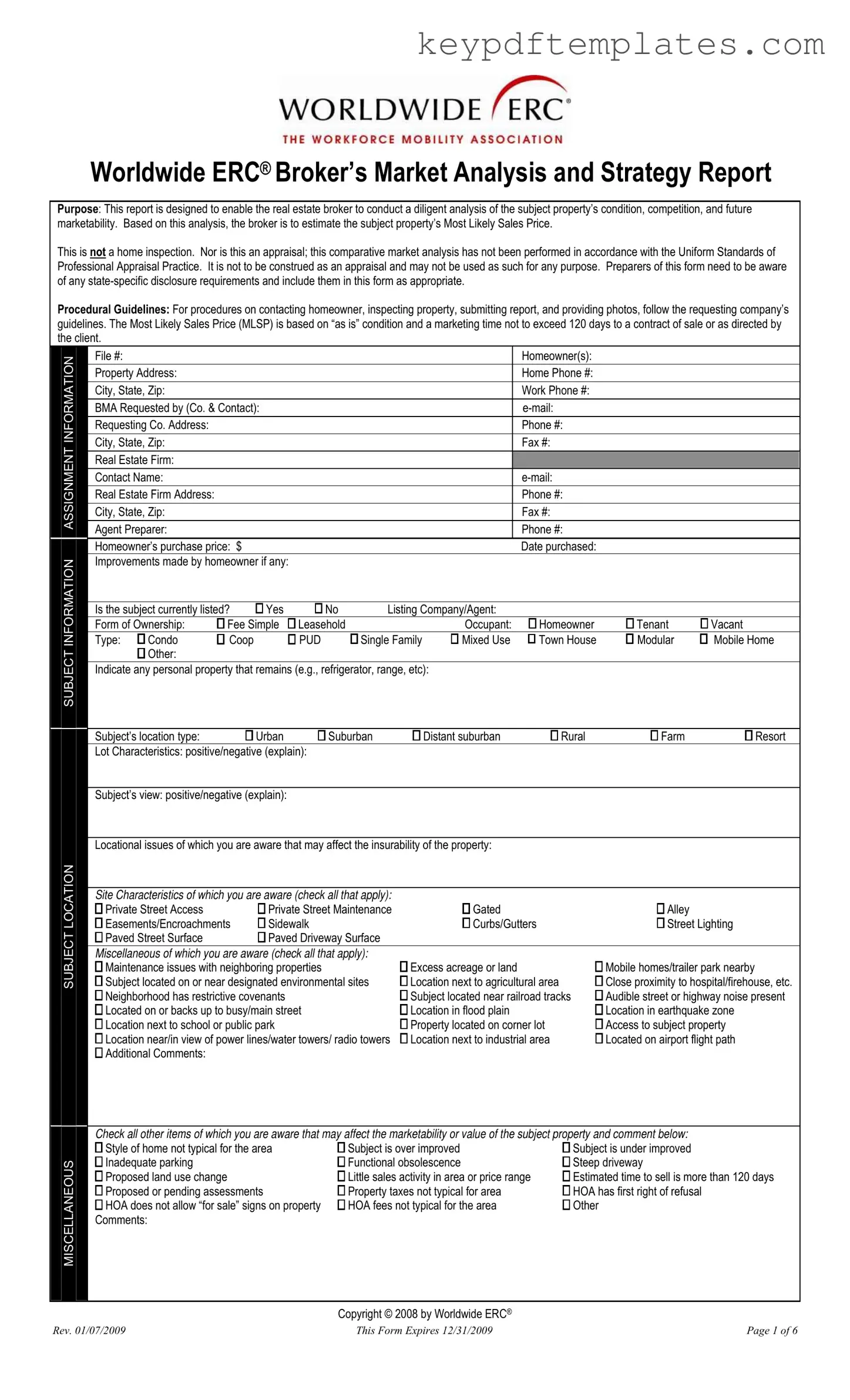Get Erc Broker Market Analysis Form
The Erc Broker Market Analysis form is a crucial tool designed for real estate brokers to evaluate a property's condition, competition, and potential marketability. This comprehensive report aids brokers in estimating the Most Likely Sales Price of a property based on a thorough analysis, rather than serving as an appraisal or home inspection. Understanding and utilizing this form effectively is essential for ensuring accurate property evaluations and compliance with state-specific disclosure requirements.
Modify Document Online
